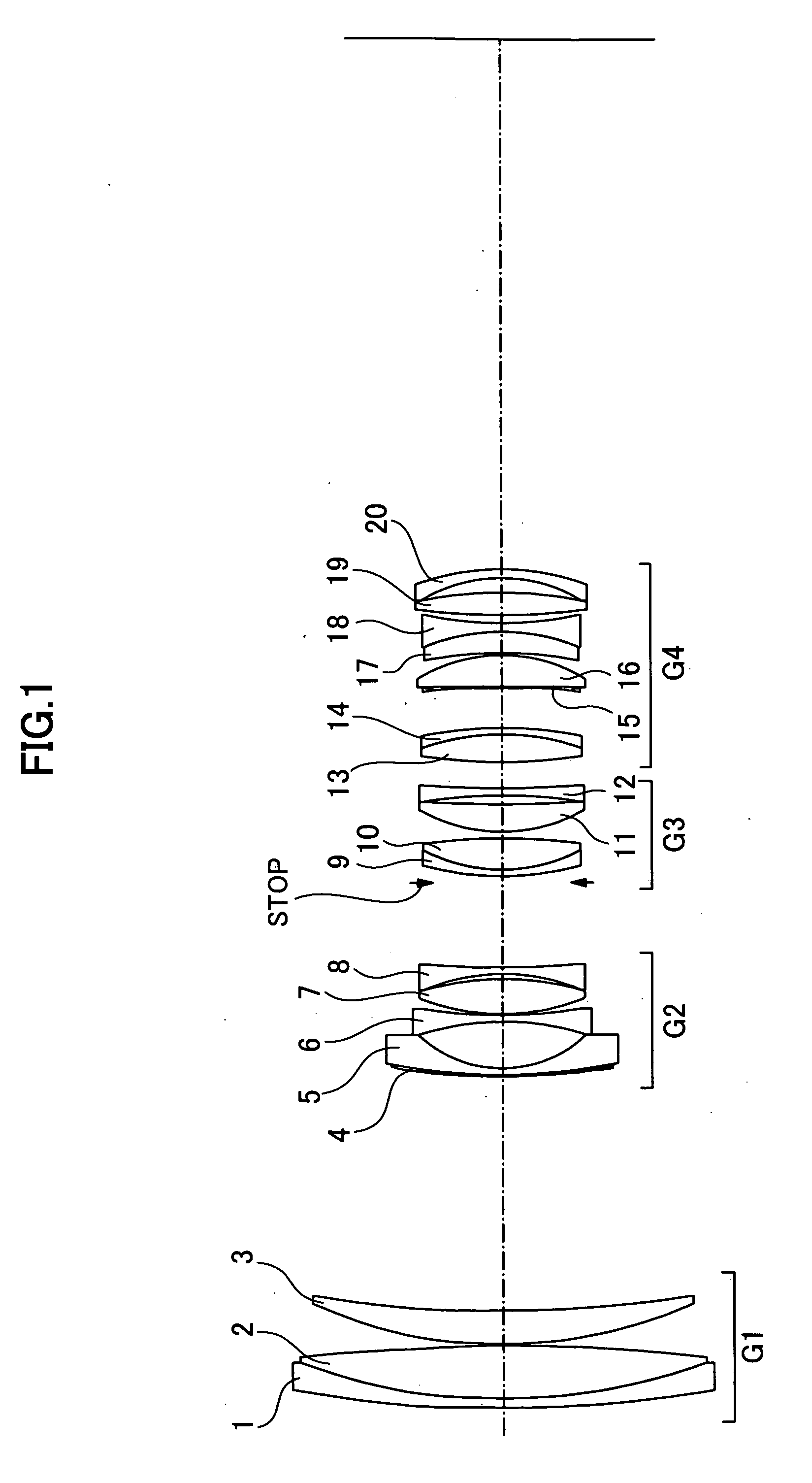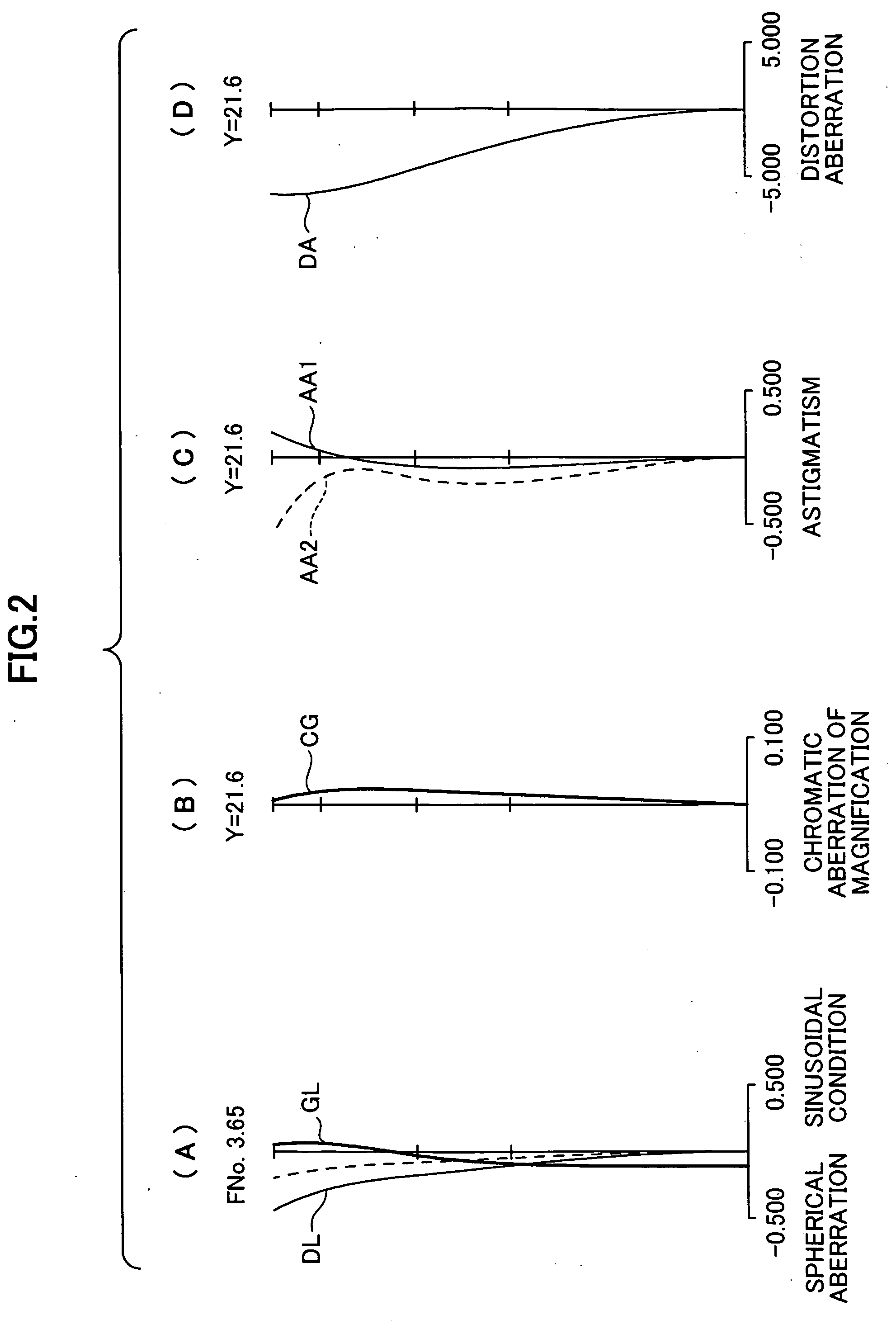Zoom lens employing lens eccentricity approach to compensate for image blur due to hand tremor
a zoom lens and eccentricity technology, applied in the field of high magnification power zoom lenses, can solve the problems of insufficient space for insufficient space for the attachment of the actuator around the aperture, and insufficient space for the eccentric movement of the lens elemen
- Summary
- Abstract
- Description
- Claims
- Application Information
AI Technical Summary
Benefits of technology
Problems solved by technology
Method used
Image
Examples
embodiment 1
[0049]As cross-sectionally shown in FIG. 1, an embodiment of a zoom lens of the present invention, which employs a lens eccentricity approach to compensate for an image blur due to a tremor of the hand of a photographer, is comprised of twenty lens pieces, namely, the 1st lens element 1 to the 20th lens element 20. They work in four groups, namely, the 1st lens group to the 4th lens group, and the 1st lens group G1 has the 1st lens element 1 to the 3rd lens element 3. The 2nd lens group G2 has the 4th lens element 4 to the 8th lens element 8. The 3rd lens group G3 has the 9th lens element 9 to the 12th lens element 12. The 4th lens group G4 has the 13th lens element 13 to the 20th lens element 20. The 13th lens element 13 and the 14th lens element 14 in the lens group G4 are cemented together into a single composite lens that is to be eccentrically moved from the remaining lens pieces for the antitremor compensation.
[0050]In the following lookup table, f is a focal length (mm), Fno ...
embodiment 2
[0076]As cross-sectionally shown in FIG. 81, another embodiment of the zoom lens of the present invention, which employs a lens eccentricity approach to compensate for an image blur due to a tremor of the hand of a photographer, is comprised of twenty lens pieces, namely, the 1st lens element 101 to the 20th lens element 120. They work in four groups, namely, the 1st lens group to the 4th lens group, and the 1st lens group G1 has the 1st lens element 101 to the 3rd lens element 103. The 2nd lens group G2 has the 4th lens element 104 to the 8th lens element 108. The 3rd lens group G3 has the 9th lens element 109 to the 12th lens element 112. The 4th lens group G4 has the 13th lens element 113 to the 20th lens element 120. The 13th lens element 113 and the 14th lens element 114 in the 4th lens group G4 are cemented together into a single composite lens that is to be eccentrically moved from the remaining lens pieces for the anti-tremor compensation.
[0077]The following lookup table (Ta...
PUM
 Login to View More
Login to View More Abstract
Description
Claims
Application Information
 Login to View More
Login to View More - R&D
- Intellectual Property
- Life Sciences
- Materials
- Tech Scout
- Unparalleled Data Quality
- Higher Quality Content
- 60% Fewer Hallucinations
Browse by: Latest US Patents, China's latest patents, Technical Efficacy Thesaurus, Application Domain, Technology Topic, Popular Technical Reports.
© 2025 PatSnap. All rights reserved.Legal|Privacy policy|Modern Slavery Act Transparency Statement|Sitemap|About US| Contact US: help@patsnap.com



